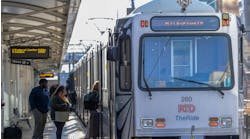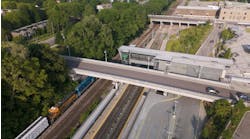FMCB Approves MBTA Service Delivery Policy
The MBTA's Fiscal and Management Control Board (FMCB) has approved the updated Service Delivery Policy, which sets the criteria the MBTA uses to evaluate service quality and to allocate transit service.
For the last two years, the MBTA worked with stakeholders to develop a living Service Delivery Policy that gives the MBTA the necessary tools to begin a bus service planning process, in an effort to provide continually improved service. The Service Delivery Policy sets standards for multiple objectives, including service availability (span and frequency of service), reliability (schedule adherence, passenger wait times), and comfort (vehicle load/crowding).
The MBTA received public comment on the draft policy that highlighted concerns with bus reliability and crowding, the need for a higher frequency of service, the need for overnight bus service, improved connectivity and easier transfers, and requests for additional bus stop shelters and amenities. The MBTA used this feedback to develop a priority-setting mechanism that allows the prioritization of some standards while working to maintain acceptable levels for all other standards.
Each standard has a medium-range goal expressed as a target and a baseline minimum of service. If a mode average falls below the minimum, this standard is prioritized in the service planning process. If an individual route falls below a minimum on a standard, it is prioritized to be addressed in a quarterly change or a service plan.
A major change from the 2010 version of the Service Delivery Policy was the development of a diagnostic tool to assess cost-efficiency of bus routes. Instead of a standard based solely on net cost, this tool measures the benefit of a bus route by factoring its ridership, the proportion of transit-dependent riders, and the value of the route to the network by the unique access it provides to people, destinations it serves, and passengers transferring to other services.
Bus routes with cost benefits in the bottom tenth percentile will be examined for service changes while routes in the top tenth percentile will be examined for lessons on high performing routes. This tool allows the MBTA to look for multiple ways to improve bus routes.
The MBTA will be using the new Service Delivery Policy to begin a rolling service planning process for all bus routes.


